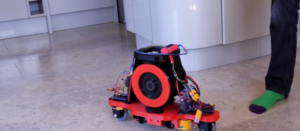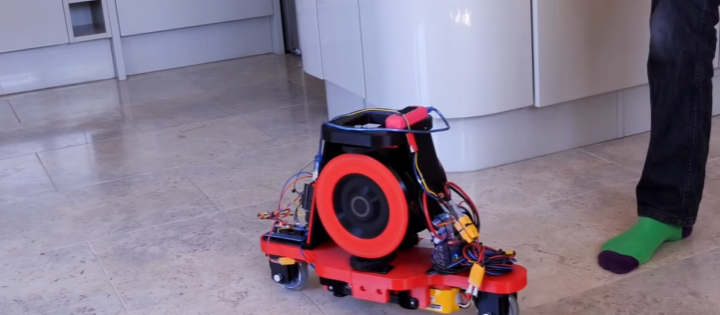Creating a Self-Balancing Robot Using Gyroscopes
Building a self-balancing robot is a fascinating project that demonstrates principles of robotics, control systems, and sensor integration. This guide will walk you through the steps to create a functional self-balancing robot using gyroscopes.
Key Components and Materials
- Microcontroller: Arduino Uno, ESP32, or Raspberry Pi.
- Gyroscope and Accelerometer: MPU6050 or similar IMU (Inertial Measurement Unit).
- Motors and Motor Driver: DC motors with an H-Bridge motor driver (e.g., L298N).
- Wheels: Two wheels suitable for the size and weight of the robot.
- Battery: Rechargeable Li-ion or Li-Po battery.
- Chassis: Lightweight and sturdy frame to hold all components.
- Wires and Connectors: For connections between components.
- Miscellaneous: Screws, nuts, spacers, and soldering materials.
Step-by-Step Instructions
- Plan the Design
- Sketch a design for your robot, keeping the center of gravity low.
- Ensure the chassis can accommodate all components securely.
- Assemble the Chassis
- Attach the motors and wheels to the chassis.
- Mount the battery and motor driver in a balanced configuration.
- Connect the Gyroscope
- Wire the MPU6050 to the microcontroller using I2C communication.
- Test the sensor by writing a program to read gyroscope and accelerometer data.
- Program the Microcontroller
- Write or upload a program to process sensor data and calculate the robot’s tilt angle.
- Implement a PID (Proportional-Integral-Derivative) controller to adjust motor speed based on tilt.
- Wire the Motor Driver
- Connect the motor driver to the microcontroller and motors.
- Test the motors by running a simple forward and backward program.
- Integrate and Test
- Combine the gyroscope and motor systems. Ensure the PID controller adjusts motor speed to keep the robot balanced.
- Test the robot on a flat surface and adjust PID parameters for optimal performance.
- Optimize and Enhance
- Fine-tune the robot’s balance by adjusting the weight distribution and PID values.
- Add features like Bluetooth control or obstacle avoidance sensors for extended functionality.
Challenges and Troubleshooting
- Oscillation: If the robot wobbles excessively, adjust the PID parameters.
- Delayed Response: Ensure the gyroscope readings are processed quickly for real-time adjustments.
- Power Issues: Use a battery with sufficient capacity and check all connections.
Additional Features
- Remote Control: Integrate a Bluetooth or Wi-Fi module for remote operation.
- Self-Charging: Add a docking mechanism for automated recharging.
- Payload Capability: Design the chassis to carry small objects while maintaining balance.
Safety and Maintenance Tips
- Secure all components to prevent loose connections.
- Regularly check the battery and motor driver for overheating.
- Avoid operating the robot on uneven or slippery surfaces.
Conclusion
Creating a self-balancing robot is a rewarding project that combines hardware and software skills. By mastering the integration of sensors, control systems, and actuators, you can expand your knowledge in robotics and pave the way for more advanced projects.

Also Read :
